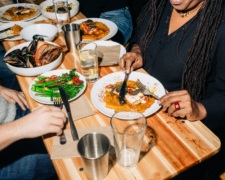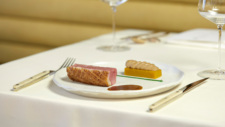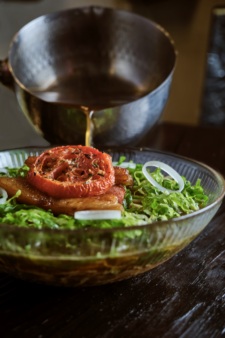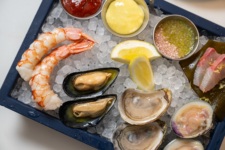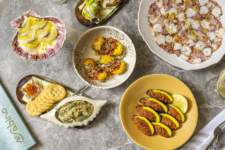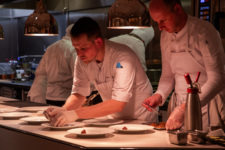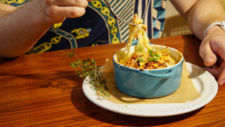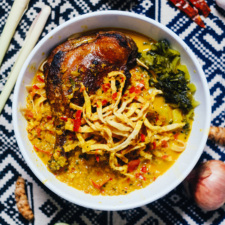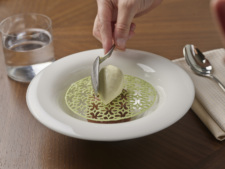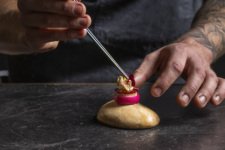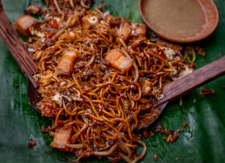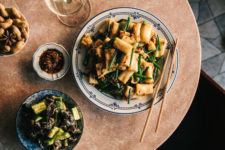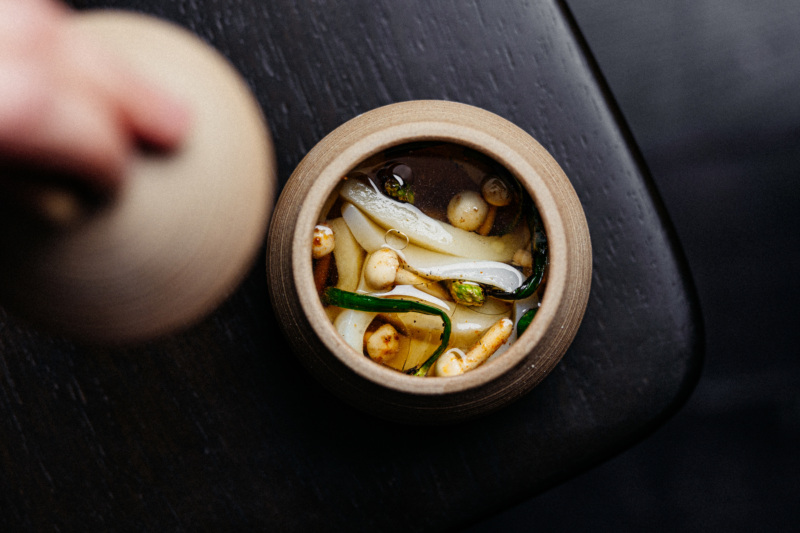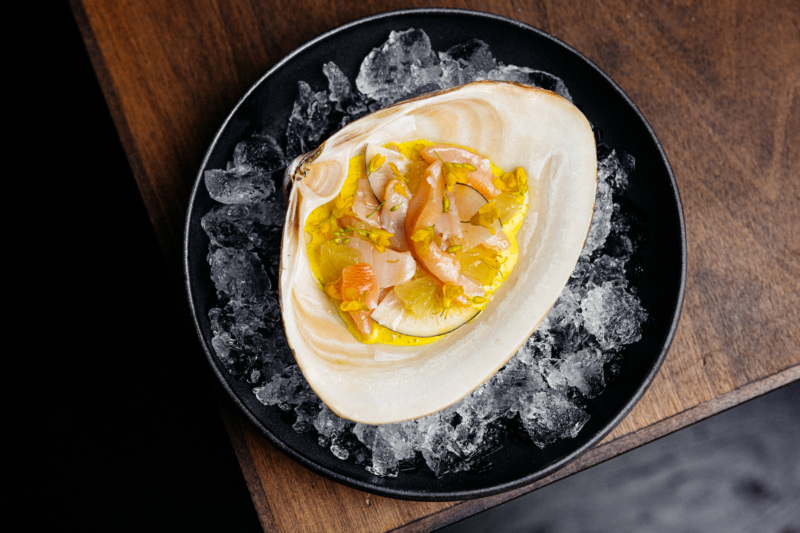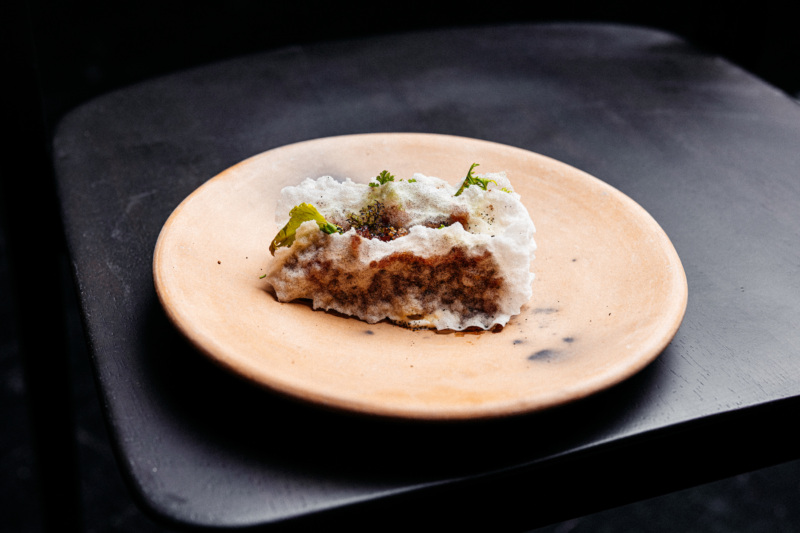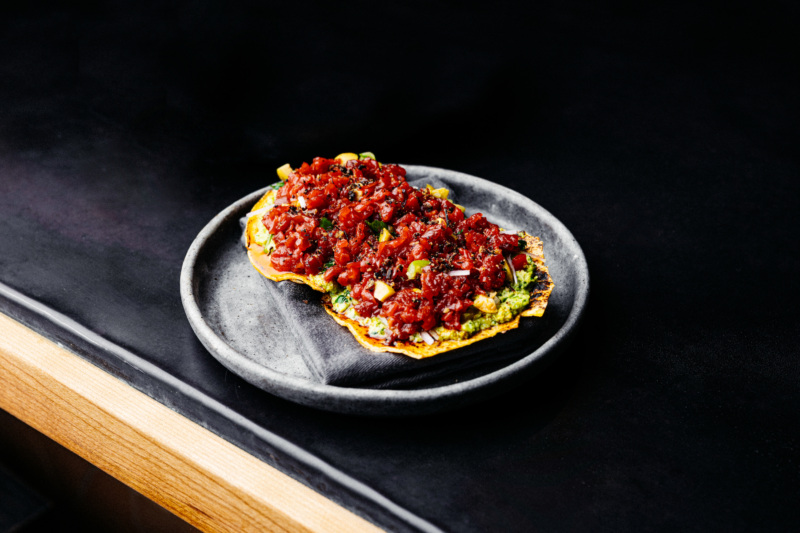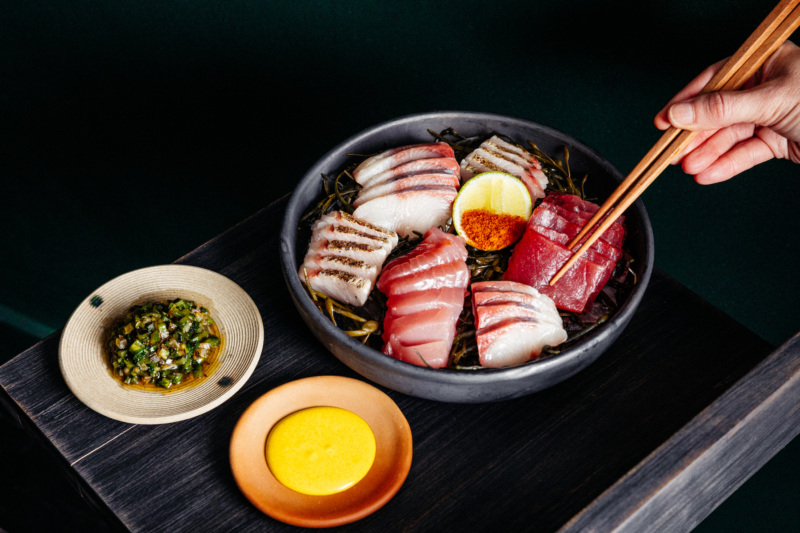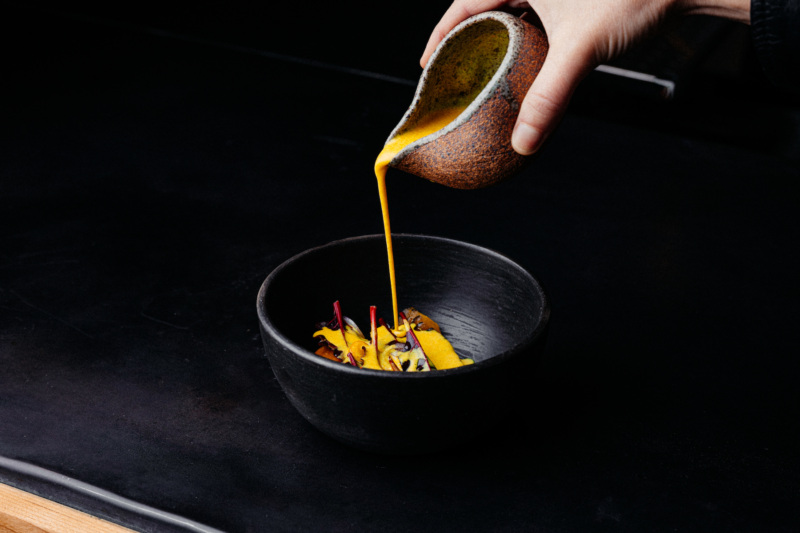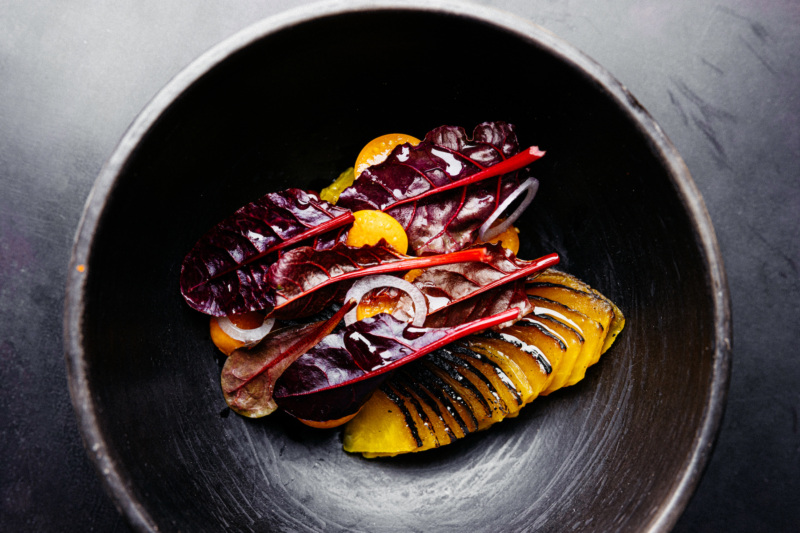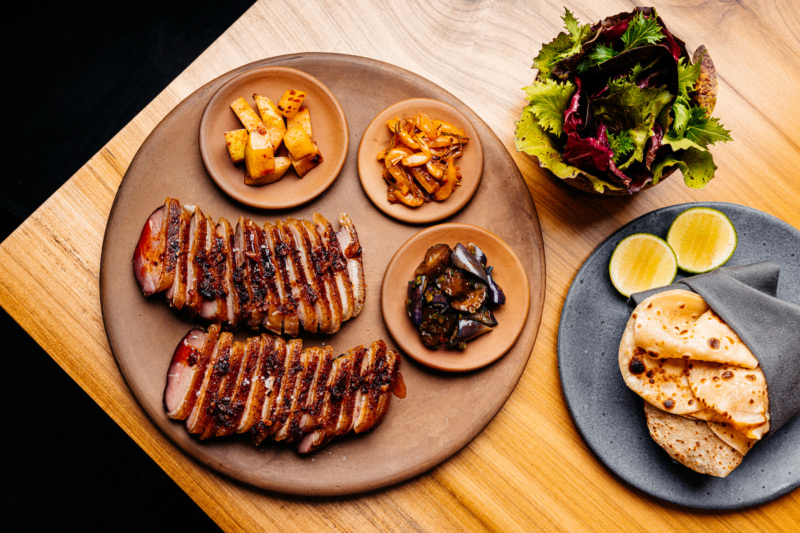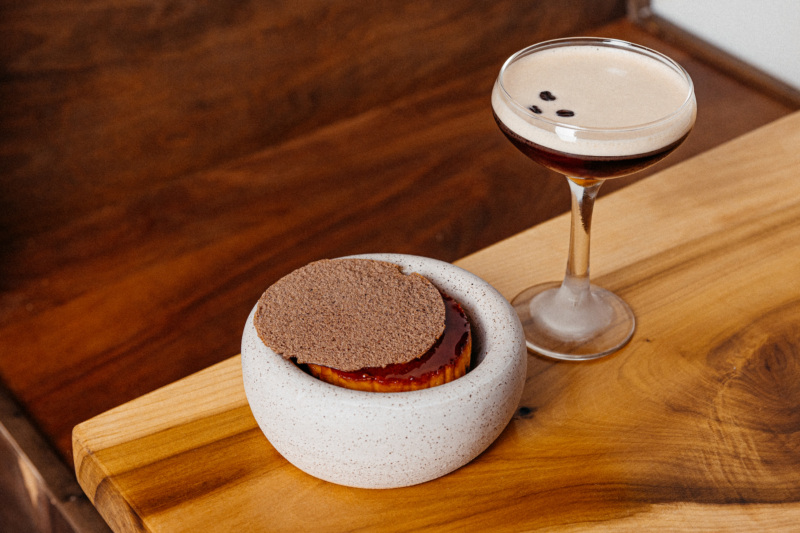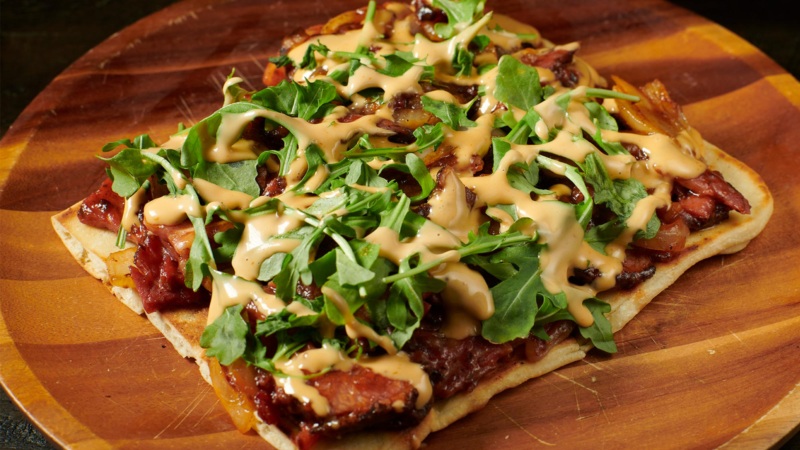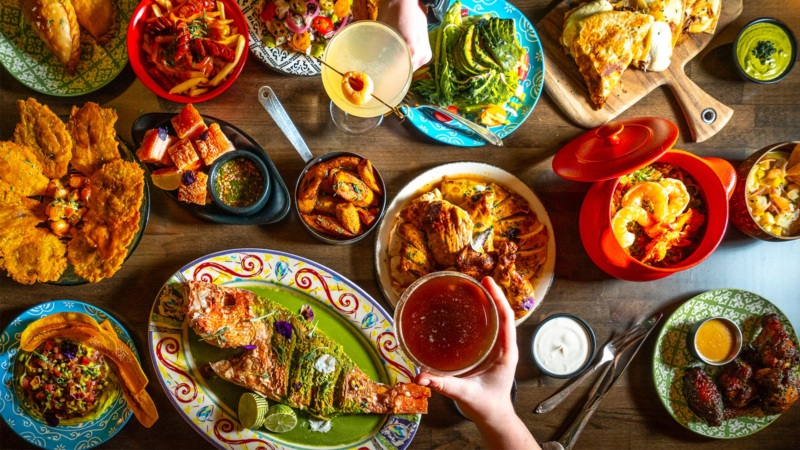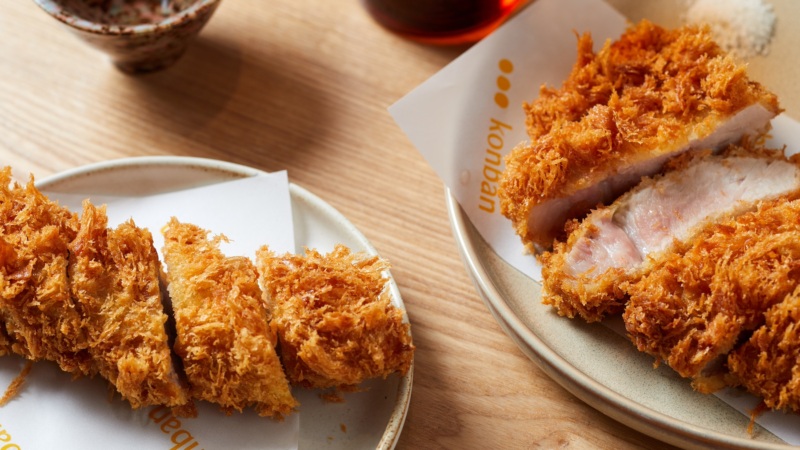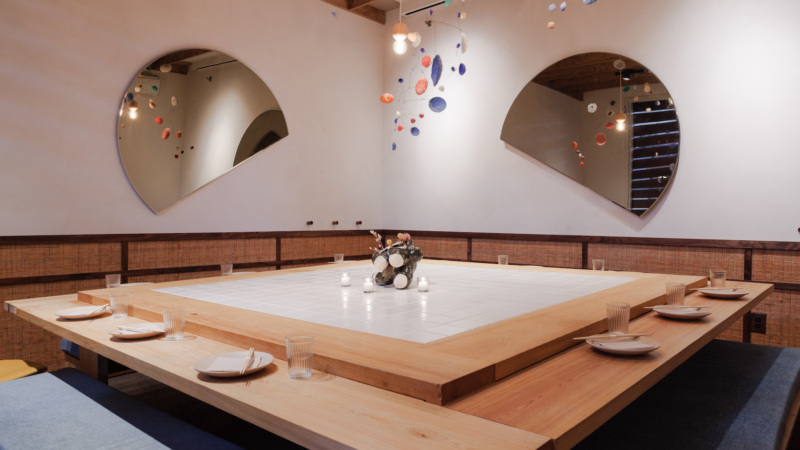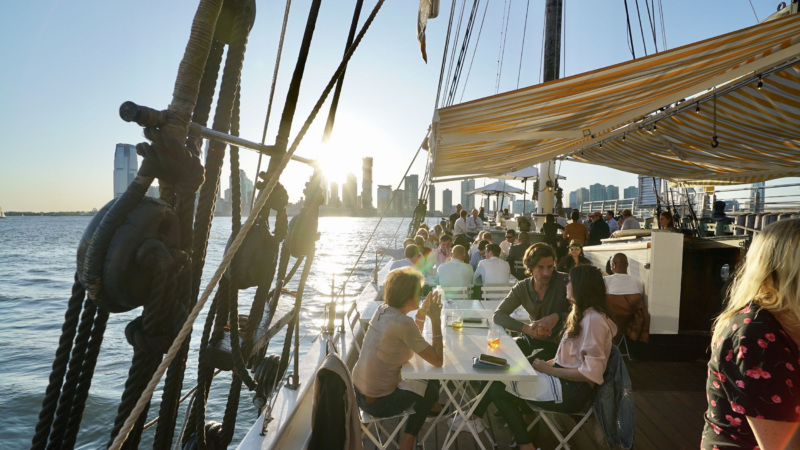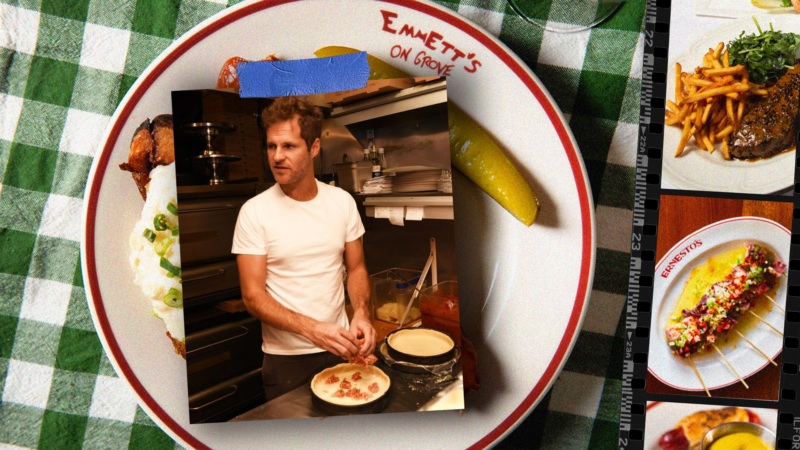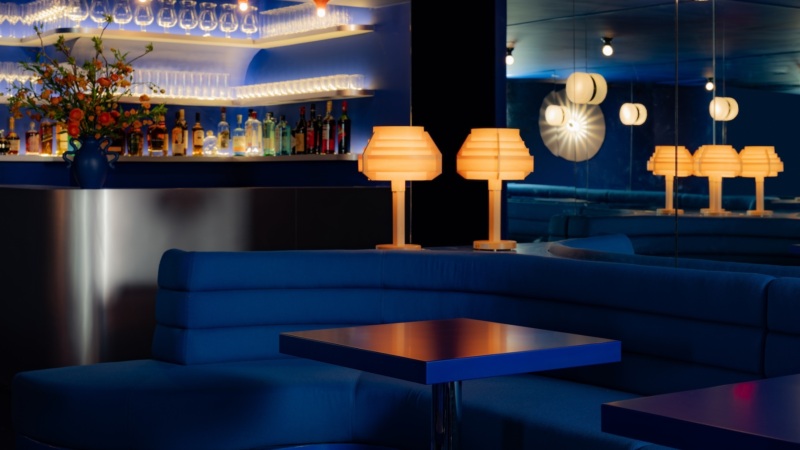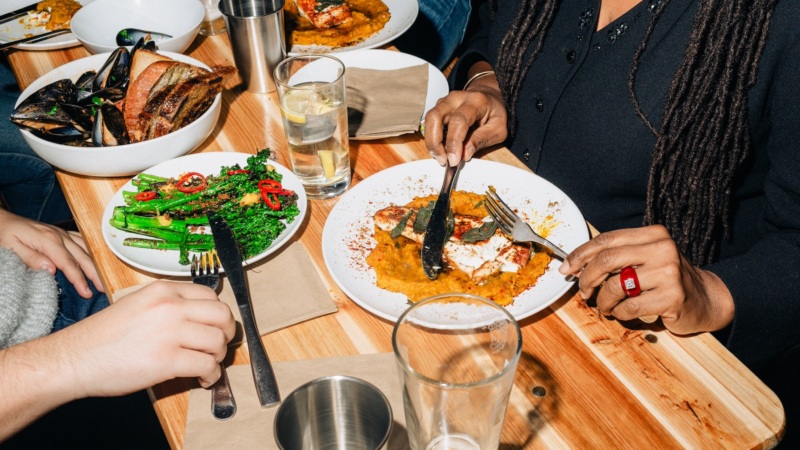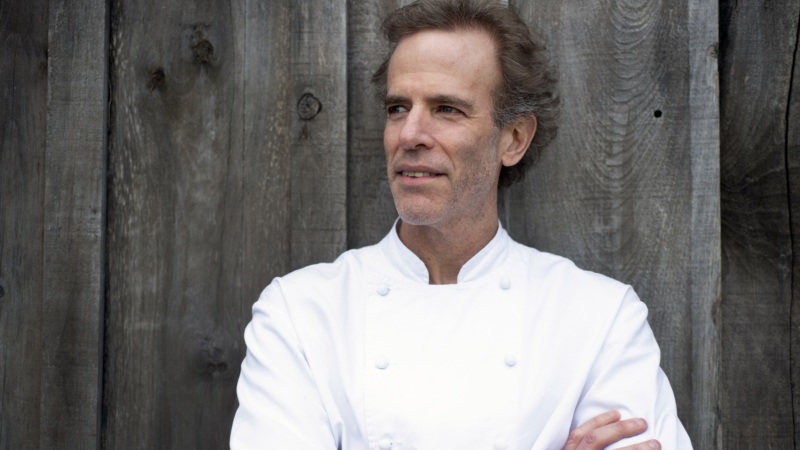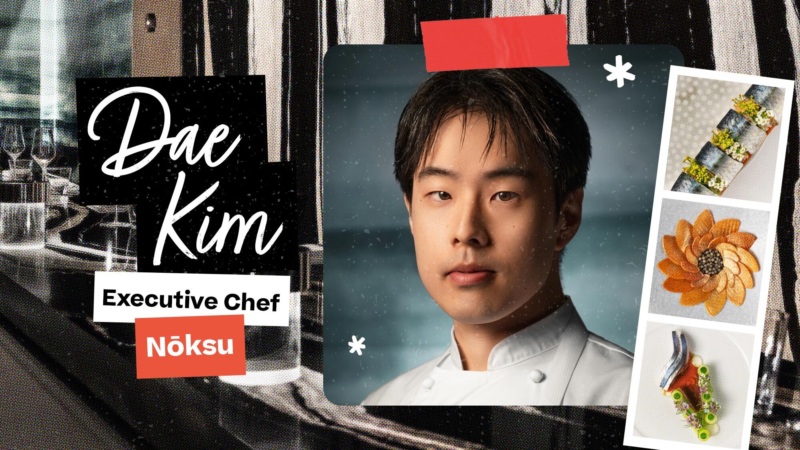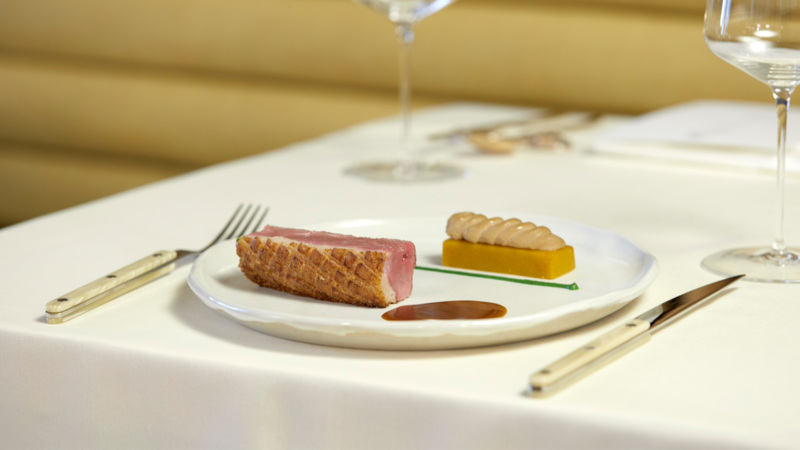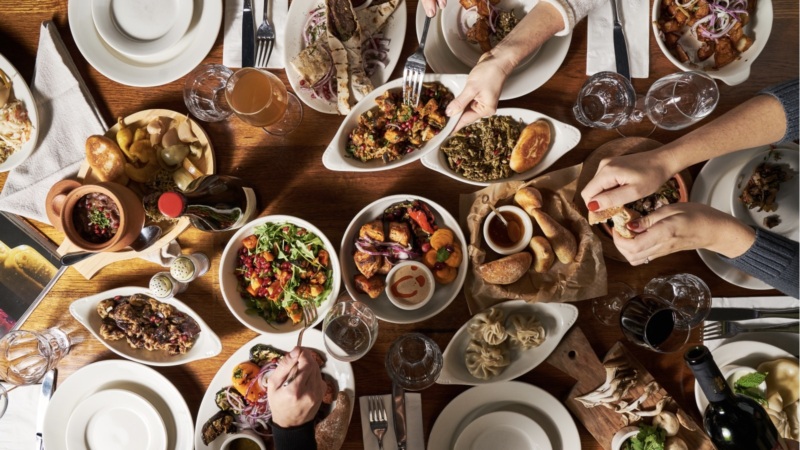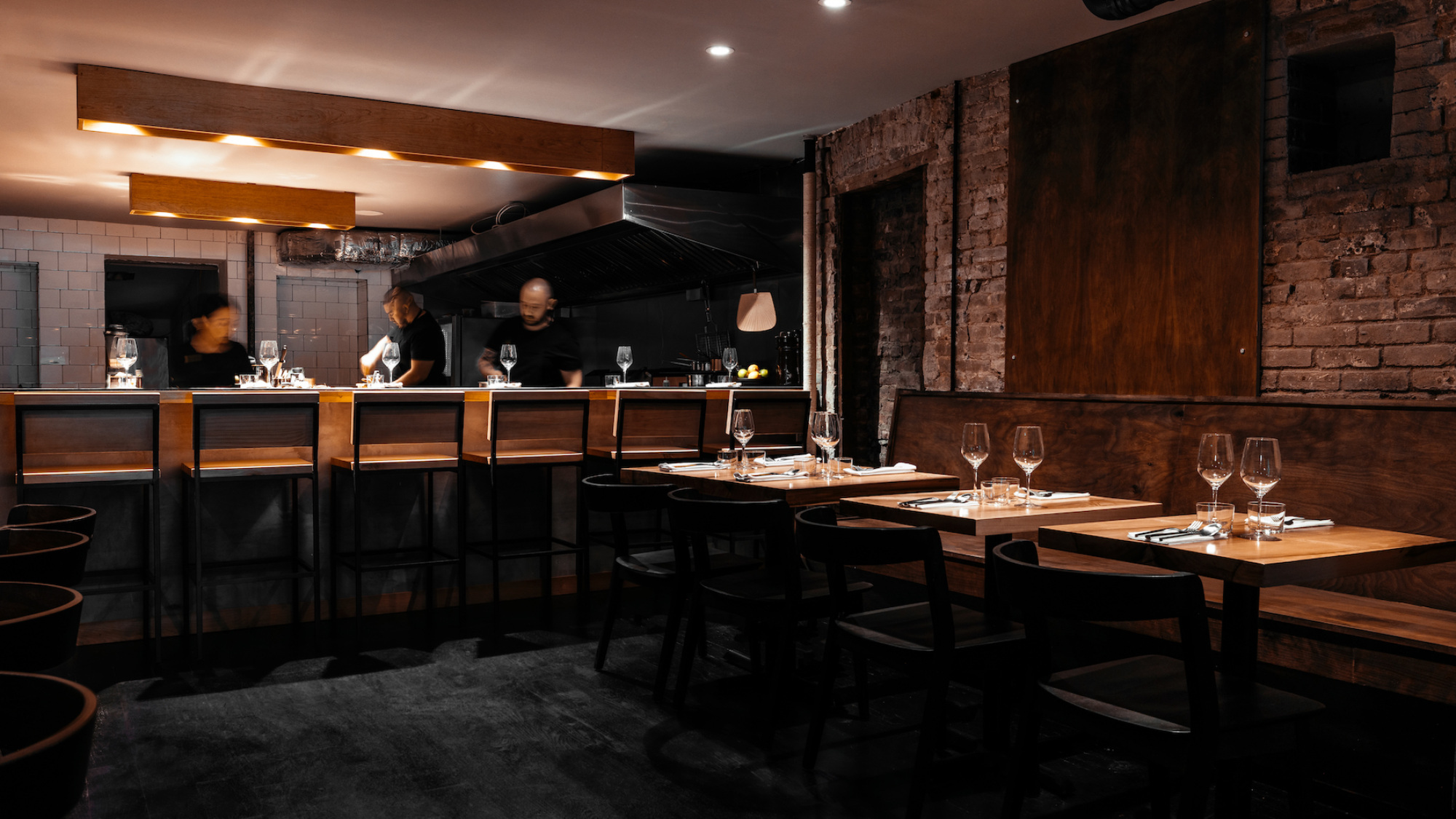
All About Corima, Now Open in Chinatown
In this edition of the Resy Rundown, we’ve got all the details on Corima, the city’s newest destination for progressive Mexican cuisine, rooted in the flavors and techniques of Northern Mexico, and located in the heart of Chinatown.
Corima comes from chef Fidel Caballero, who started it as a roving, global pop-up three years ago. Now that Corima has a permanent home, we spoke with Caballero for all the information you need to know before you go.
1. If Corima sounds familiar that’s probably because …
You were lucky enough to drag smoked scallops and wood ear mushrooms through a shallow pool of brown butter covered in grassy, peppery, celtuce at Rhodora, a wine bar in Brooklyn, back in the fall of 2021. Or maybe you had a bite of hake layered into a Spanish tortilla at the now-departed Cool World last fall.
Caballero first started Corima as a pop-up in 2021 after spending time cooking in Shanghai (The Bistro), San Sebastián (Michelin-starred Martín Berasategui), and New York (Contra). He’s since hosted it in New York City, Paris, Mexico City, and his hometown of El Paso, Texas. As a sous chef at Contra, he admired the restaurant’s ability to explore complex flavors from around the world, while still being rooted in New York. After seeing many of his peers pivot to pop-ups during the pandemic, he launched Corima after some test runs at Fulgurances Laundromat in Greenpoint, and People’s Wine Bar, located inside Essex Market.
It’s always been a lifelong dream for Caballero to open a restaurant, stretching back to a time when he and a friend bought a food truck from Craigslist and sold tacos with ingredients sourced from local Japanese and Chinese markets throughout El Paso, back in the early 2010s.
He named his pop-up Corima, after Korima, which he explains is “a cornerstone principle of the Indigenous Tarahumara, or Rarámuri community, who live in the state of Chihuahua in Mexico, [which] means ‘circle of sharing.’” It’s a concept he holds near and dear, especially given his experiences of growing up in the border towns of Ciudad Juárez, Mexico, and El Paso. Corima, he says, allows him to share his interpretation of the ingredients and techniques of the Chihuahuan Desert, and the sense of duality that comes from the constant migration that takes place between these two places.
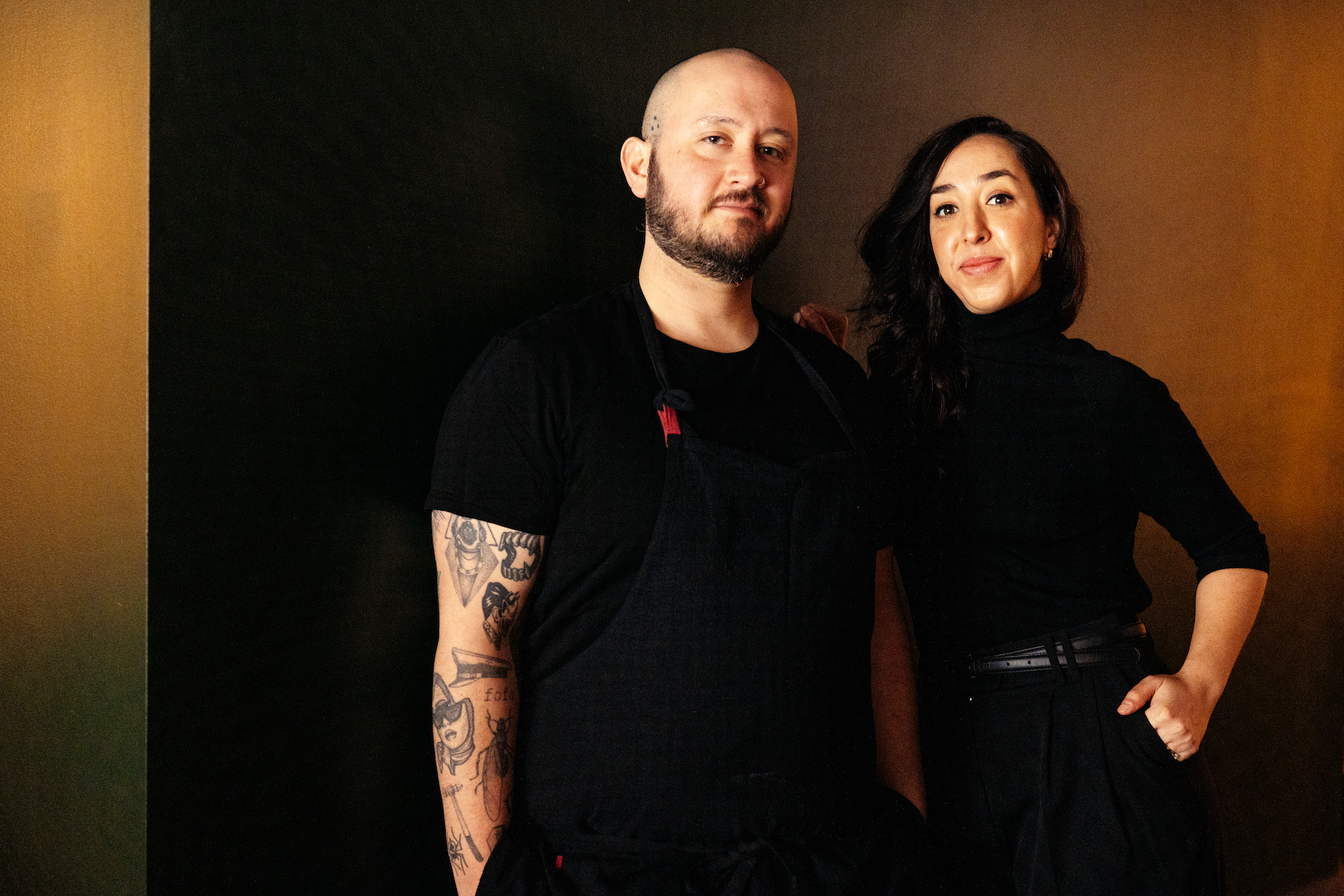
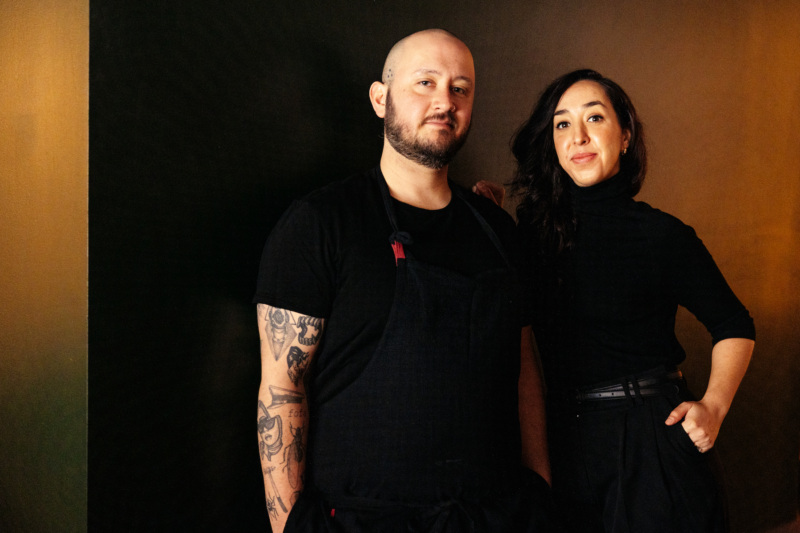
2. So, what exactly is “progressive Mexican cuisine?”
Even though Caballero intends to primarily showcase the food from where he grew up, you will find some unexpected (and delicious) twists, influences, and inspirations drawn from his varied experiences both inside and outside of the kitchen. “Mexican food did not evolve overnight, and it varies by region,” he says. Even the restaurant’s location in Chinatown is a fitting metaphor for the influence that Chinese migration, beginning in the late 19th century, has had on Mexican food. El Paso, he says, was once home to the largest Chinese community in Texas, making ingredients like soy sauce and produce like bitter melon accessible to Caballero from a young age.
“Progressive Mexican cuisine,” he says, “is an endless exploration of the ideology that Mexican cuisine has toward the land and technique.”
At Corima, diners have the agency to choose their own adventure — there’s an à la carte menu designed to be shared, as well as a seven-course chef’s tasting menu, priced at $98 per guest, with an optional beverage pairing of $65 per person. You’ll find a similar dual-menu concept over at newly opened Naks, a Filipino restaurant in the East Village, as well. Reservations are taken for both menus.
With every dish, Caballero skillfully couples age-old family traditions and local products. In a smoked swordfish tamal made from golden masa and stuffed with potatoes, available on the à la carte menu, he recreates the smoky, fatty flavors of his hometown with New England swordfish. “We smoked marlin growing up, but swordfish is super big on the East Coast.” Jamón ibérico foam bubbles over the ridges of the corn husk as a nod to Caballero’s experience cooking in the Basque Country.
In another dish, exclusive to the tasting menu, you’ll find potato udon noodles, cuttlefish, and shimeji mushrooms floating in an almost nutty dashi made from cornhusks, as little drops of burnt tortilla oil linger on the surface of the broth like remnants from his home.
Pastry chef Julie Shin (formerly of New York’s Contra and The Catskills’ Paracasa) oversees the desserts. Together with Caballero, Shin reimagines the traditional Mexican dessert chocoflan — you’ll hear an audible crack as you break through a salty caramel-like dulse seaweed lace, into bouncy, milky custard layered atop a fudgy cake that sticks just a bit to the back of your mouth.
Diners should always expect a bit of spontaneity with the menu because dishes will rotate daily. “We want to have people come back as often as they can, and obviously, you need to be innovative; [they are] not going to come eat the same thing over and over again,” Caballero notes.
Later this winter, Caballero plans to debut a steak for two spotlighting underused cuts like the pierna (leg) or round. “Northern Mexico is cattle country, and where we come from and what we do with our cows is we sell the most expensive parts,” he says. Corima’s steak gets covered in guajillo chile jus while it cooks for 48 hours, very low and slow, allowing nutty umami flavors to nestle themselves into the fork-tender meat. It’s served with condiments like pickled fushimi and salsa borracha.
3. Whatever you do, don’t overlook the flour tortillas, or the quesadilla.
Tortillas are such a staple of the menu that it will be one cook’s entire responsibility to roll and carefully watch hundreds of them puff up each night inside the restaurant’s clay comal. “Instead of bread and butter, we eat flour tortillas and butter,” Caballero explains when discussing the cuisine of Northern Mexico and El Paso. “People don’t really realize that there’s a huge German population [in Mexico] that brought wheat to the region, and it still grows in the shadows of their settlement,” he notes, referencing the flour tortillas.
At Corima, the tortillas are made of white Sonoran flour from Ramona Farms and chicken fat, as opposed to the traditional pork fat. (There are plans to offer a vegetarian tortilla made with butter instead of animal fat, too.) The tortillas are a major component of the tasting menu and are also available on the à la carte menu, too. When the tortillas are presented to your table, they’re meant to be ripped and dipped into cultured recado negro butter, made with chiles and spices sourced directly from Mexico.
The quesadilla at Corima, offered à la carte, features huitlacoche, a corn fungus sometimes known as a “Mexican truffle.” Asadero, a soft white cheese made from both cow and goat milks, melts effortlessly between the crisp tortillas, and is intensified by the addition of black truffles.
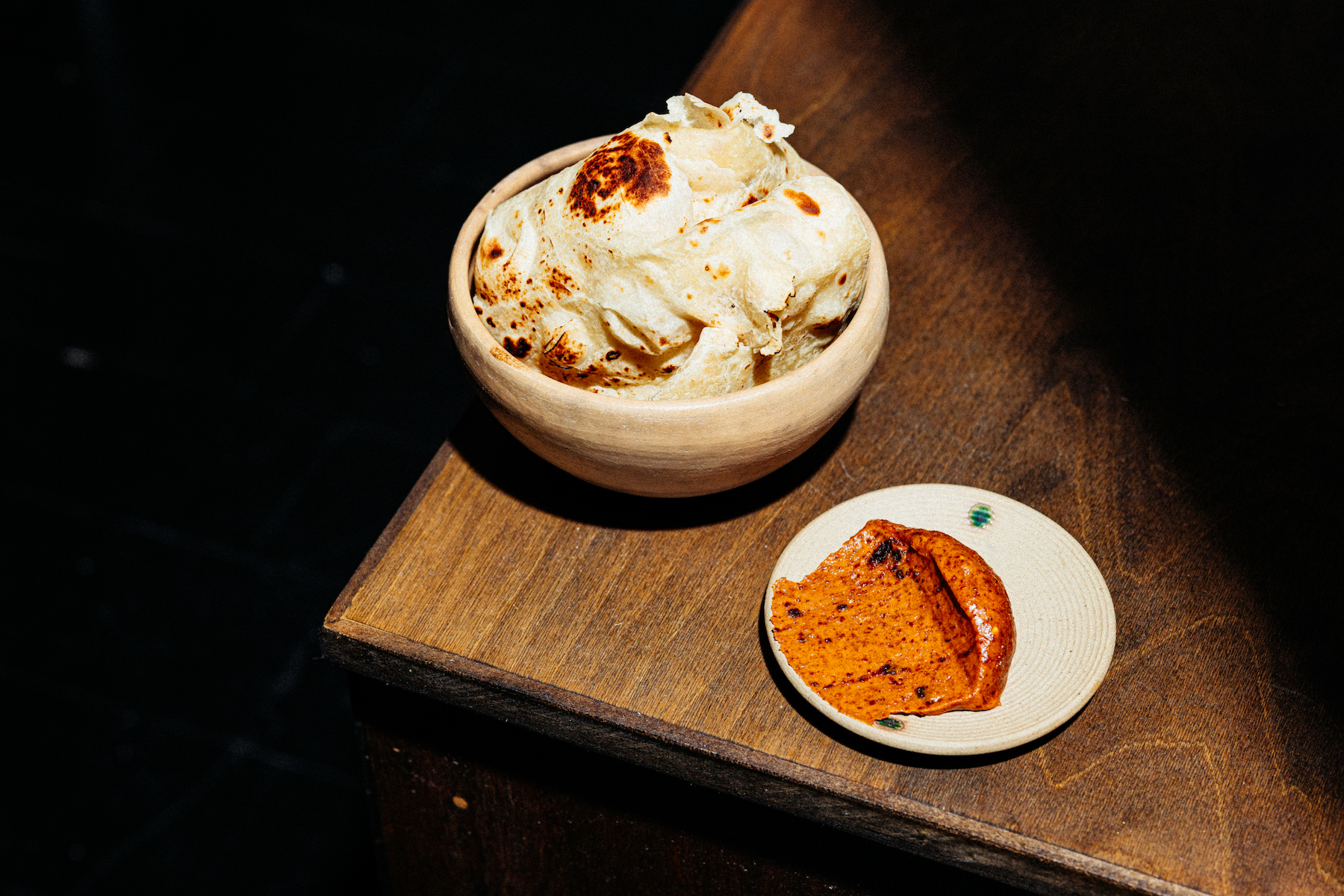
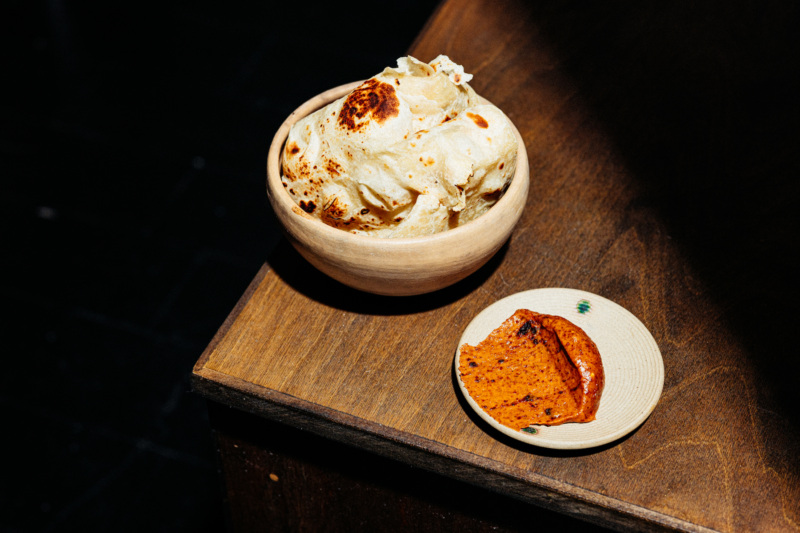
4. Don’t sleep on the drinks, either.
Corima’s bar program is extensive, with a range of cocktails, spirits, and wines. For the cocktails, Caballero enlisted the help of Sam Geller, who curated many of the cocktails at their first pop-up at Rhodora. Drinks put spins on standard preparations, like Corima’s riff on a Paper Plane, made with sotol instead of bourbon, which produces a wide variety of flavor properties that range from bright and grassy to pine-like.
Sotol and other agave-based spirits anchor the bar program led by general manager Vince Ott (formerly of Thai Diner), which includes some friendly faces and other spirits you may or may not have yet to try: mezcal, raicilla, bacanora, and unclassified destilado de agave. Of particular note are some rare mezcals from Lamata Spirits, a project led by Luis Loya of Chihuahua, who focuses on surfacing the terroir of Northern Mexico through the practices of small-batch producers.
Corima’s wine list has approximately 70 bottles carefully selected by sommelier Mariano Garay (formerly of Leo) that represent regions from around the world, including France, Spain, and Mexico. Garay says the by-the-glass list will rotate often, and he notes the “ethos is to have the wine be accessible, while still having good wine.” Do look for a tangy, hibiscus-heavy rosado from natural wine label La Casa Vieja, or a bottle of Vinos Pijoan’s Vino Pelon, a deep red fruit syrah blend that shines blue in the light. If you have been longing to try more oxidative wines, check out Bodegas Cota 45’s UBE Paganilla, a wine aged under a yeasty flor veil, offering a subtle sherry-like flavor that’s said to enhance your perception of umami.
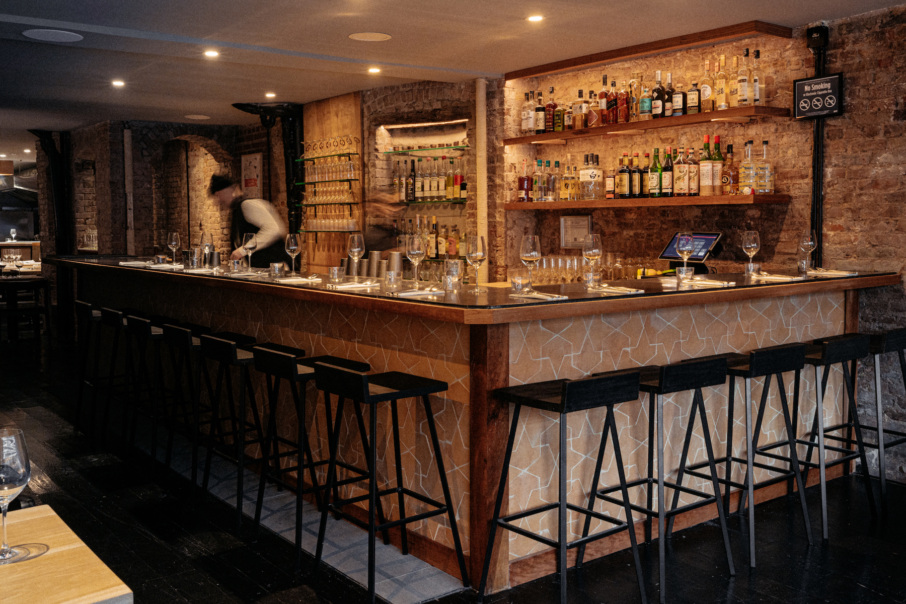
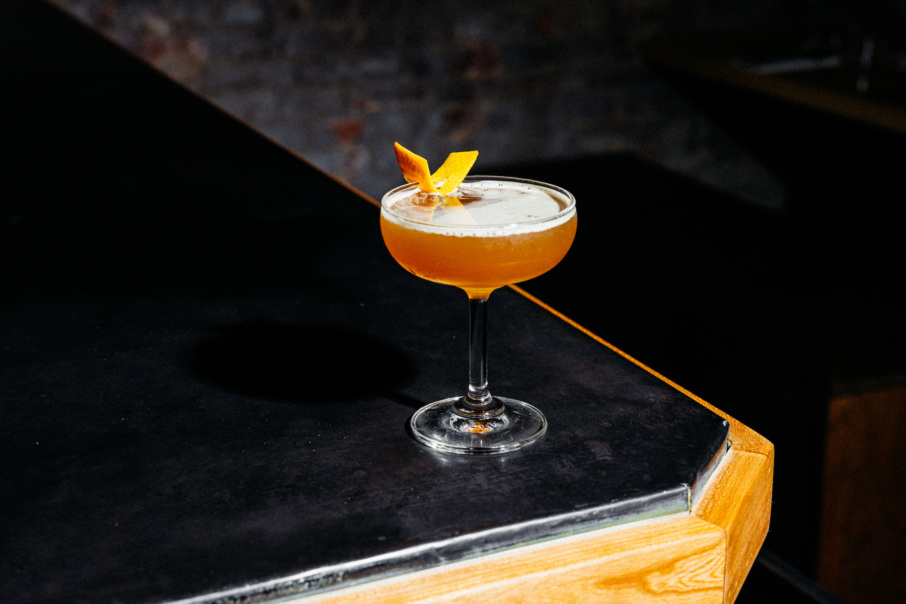
5. You’ll feel like you’re not in New York City when you dine here.
The 54-seat restaurant has a minimal, but warm interior that takes design influences from the Chihuahuan Desert. Charming brick archways, a serendipitous discovery during demolition, look like they have always been there because, well, they have, and the overall effect makes it feel like you’ve found an expansive cave in the desert. Sleek, gray-washed wooden benches form perpendicular lines with wooden tables, while rosy brick walls lined with prints by Nick Sethi contrast with the pepper-colored floors.
At the entrance, there are tables available to reserve for à la carte dining, including a six-top to accommodate larger parties, as well as a couple of four-tops and several two-tops. Twelve seats wrap around the bar, lined with a mesmerizing geometric pattern of handmade tiles, by Zia Tile based in Los Angeles, welcoming solo diners or smaller parties who want to learn more about the sotol program. Deeper into the restaurant, you can enjoy a front-row seat to the open kitchen at the six-seat chef’s counter where they serve the tasting menu. “There are no curtains. There’s none of that. We’re transparent,” Caballero says.
Before you take your first bite, you may want to take note of the sublime plates, bowls, and vessels, too. Caballero and his partner, Sofia Ostos, handpicked pottery in Mexico for the restaurant, even assisting Santa María Atzompa-based ceramicist Rufina Ruiz López in firing off Corima’s sandy-toned plateware. They also visited black clay artists near Oaxaca in San Bartolo Coyotepec. And they also commissioned Brooklyn-based ceramicist Natalie Tischler to craft additional vessels inspired by Mexico.
“I always like to circle back to my heritage,” says Caballero. And while it’s clear his cooking focuses on Chihuahuan cuisine, he also brings so many different influences — and you — into his circle at Corima.
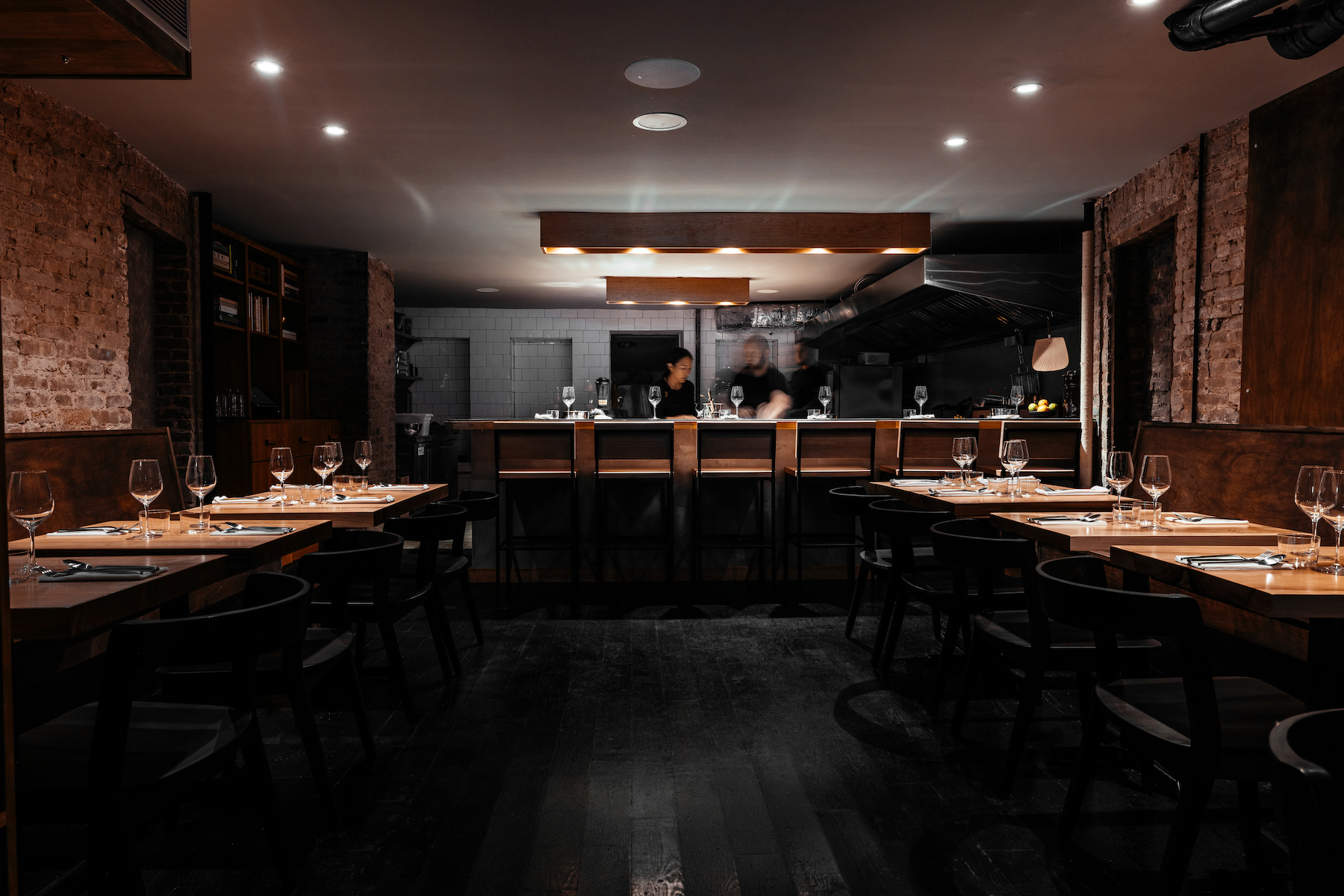
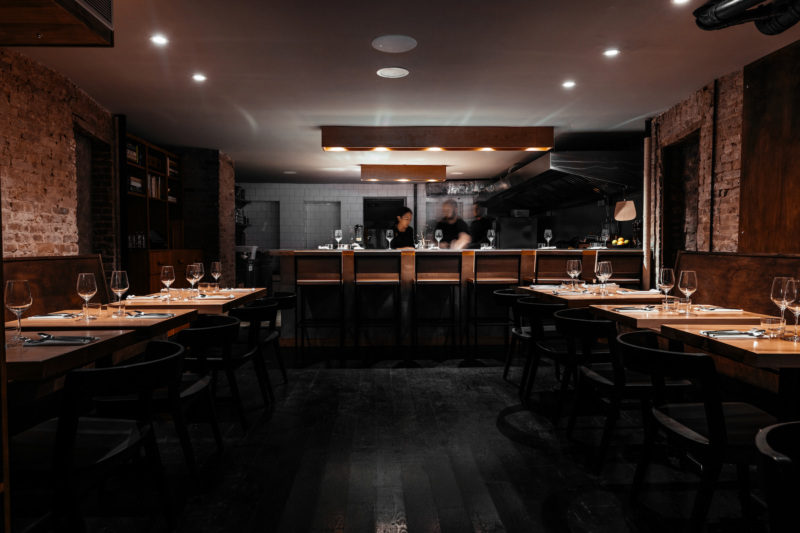
Corima is open Tuesdays to Saturdays from 5:30 to 10:30 p.m.
Katerina Liakos grew up in a restaurant and has cooked professionally in Italy, Iceland, and New York City. She writes about cooking and food-related trends in publications like Food & Wine and This is Mold. She is currently based in New York’s Hudson Valley, where she is currently sous chef of the Old Chatham Country Store. Follow her on Instagram. Follow Resy, too.



